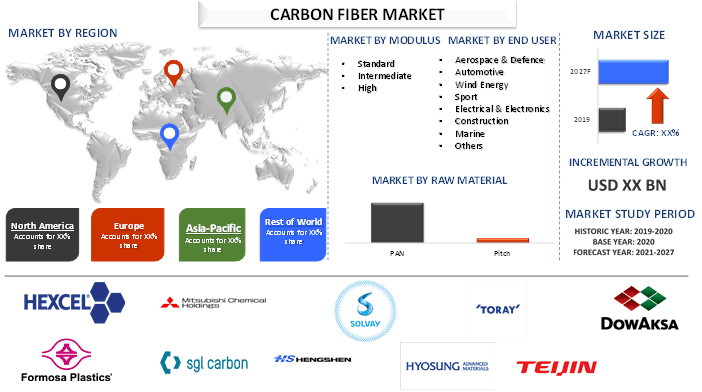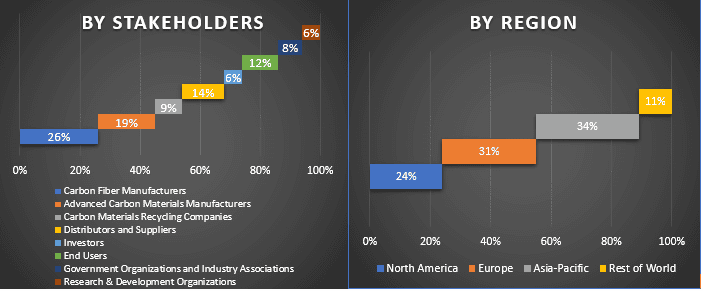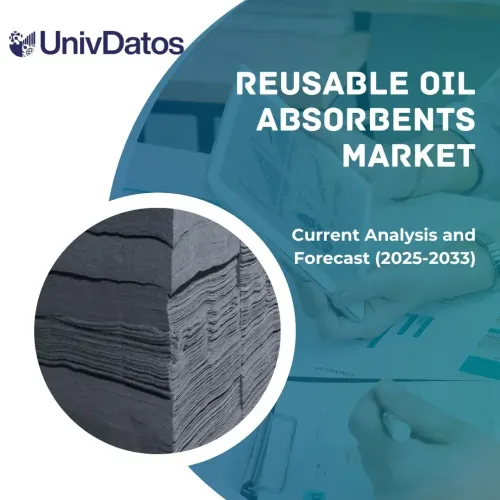- Home
- About Us
- Industry
- Services
- Reading
- Contact Us
Carbon Fiber Market: Current Analysis and Forecast (2021-2027)
Emphasis on Raw Material (PAN, Pitch); Fiber Type (Virgin, Recycled); Product Type (Continuous, Long, Short); Tow Type (Regular, Large); Modulus (Standard, Intermediate, High); Application (Composite, Non-composite); End User (Aerospace & Defence; Automotive; Wind Energy, Sport, Electrical & Electronics, Construction, Marine, Others); and Region/Country

The global carbon fiber market was stood around $4 billion in 2020 and is expected to demonstrate the growth of around 8% during the forecast period (2021-2027). With the intention to lower the carbon emission, countries has taken pledges to meet their respective climate goals. Governments are taking several measures and initiative to reduce the carbon emission from various sectors like energy and transportation. This shift towards eco-friendly sustainable future is opening the doors for advance carbon materials. Currently, industries like energy is increasingly focusing on renewable energy like wind. A large number of components used in this sector are made using carbon composites resulting in lightweight and high strength. Further, automotive industry is witnessing tough regulation regarding emission from vehicles. Therefore, companies are lowering vehicle weights to improve fuel economy while maintaining safety and performance
Since carbon fiber are used in the aerospace & defence, automotive, wind energy, sports, electrical & electronics, and marine among others. Therefore, its demand is highly dependent on these industries. In the light of COVID-19, many of these industries faced negative impact owing to halted operation or insufficient availability of raw materials due to lockdown and border closures. For instance, according to OICA, the production of automotive fall by 16% in 2020, hampering the automotive components market included those are made up of carbon fiber.
Insights Presented in the Report
“Amongst raw material, polyacrylonitrile (PAN) category holds prominent share in the market in 2020.”
Based on type, the market is bifurcated into PAN and pitch. Among both, PAN held the major share in the market in 2020 owing to its high yielding rate along with several crucial properties such as high thermal stability, low density, cost-effectiveness, and high resistance and elasticity modulus.
“Amongst tow type, regular tow carbon fiber held the significant portion of the pie in 2020.”
Based on end user, the market is bifurcated into regular and large carbon tow. Among these, regular tow held the significant share in the market in 2020. The demand of regular and large tow varies depending upon the application areas. The main application of regular tow carbon fiber is aerospace & defence, pressure vessel, and automotive. Whereas the demand for large tow is from windmill and automotive. However, COVID-19 had a negative impact on both type of carbon fiber. For instance, fall in production of aircraft, automobiles, and pressure vessels affected the market of regular tow while large tow mainly affected by decreased production of automobiles.
“Asia-Pacific is likely to showcase robust growth during the forecast period”
For a better understanding of the market adoption, report provide detailed analysis for major region and countries including North America (US, Canada), Europe (Germany, UK, France, Spain, Italy, Rest of Europe), Asia-Pacific (China, Japan, India, Australia, South Korea, Rest of APAC), and Rest of World. Asia-pacific held the significant revenue share and is likely to robust growth during the forecast period. This can be mainly attributable to the growing aerospace & defence, automotive, wind energy, marine, and electrical & electronics industry among others, the demand of components used in these industries are increasing including components manufactured using carbon fiber. Further, the region is investing in R&D to reduce the cost of carbon fiber, thus providing opportunity to companies to adopt carbon fiber in place of conventional materials. Some of the major companies profiled in the report includes Hexcel Corporation, Mitsubishi Chemical Holdings, Toray, Solvay, Formosa Plastic Corporation, Jiangsu Hengshen Co. Ltd., DowAksa, Teijin Limited, SGL Carbon, and Hyosung Advanced Material.
Reasons to buy this report:
- The study includes market sizing and forecasting analysis validated by authenticated key industry experts
- The report presents a quick review of overall industry performance at one glance
- The report covers in-depth analysis of prominent industry peers with a primary focus on key business financials, product portfolio, expansion strategies, and recent developments
- Detailed examination of drivers, restraints, key trends, and opportunities prevailing in the industry
- The study comprehensively covers the market across different segments
- Deep dive country level analysis of the industry
Customization Options:
The global carbon fiber market can further be customized as per the requirement or any other market segment. Besides this, UMI understands that you may have your own business needs, hence feel free to connect with us to get a report that completely suits your requirements.
Table of Content
Analyzing the historical market, estimation of the current market, and forecasting the future market of the carbon fiber three major steps undertaken to create and analyze its adoption across the globe. Exhaustive secondary research was conducted to collect the historical market numbers and estimate the current market size. Secondly, to validate these insights, numerous findings and assumptions were taken into consideration. Moreover, exhaustive primary interviews were also conducted, with industry experts across the value chain of the carbon fiber industry. Post assumption and validation of market numbers through primary interviews, we employed a mixed approach to forecast the complete market size. Thereafter, market breakdown and data triangulation methods were adopted to estimate and analyze the market size of segments and sub-segments the industry pertains to. Detailed methodology is explained below:
Analysis of Historical Market Size
Step 1: In-Depth Study of Secondary Sources:
Detail secondary study was conducted to obtain the historical market size of the carbon fiber through company internal sources such as annual report & financial statements, performance presentations, press releases, etc., and external sources including journals, news & articles, government publications, competitor publications, sector reports, third-party database, and other credible publications.
Step 2: Market Segmentation:
After obtaining the historical market size of the carbon fiber market, we conducted a detailed secondary analysis to gather current market insights and share for different segments & sub-segments for major regions. Major segments included in the report are by raw material, fiber type, product type, tow type, modulus, application, and end user. Further regional and country-level analyses were conducted to evaluate the overall adoption of the carbon fiber globally.
Step 3: Factor Analysis:
After acquiring the historical market size of different segments and sub-segments, we conducted a detailed factor analysis to estimate the current market size of carbon fiber. Further, we conducted factor analysis using dependent and independent variables such as growing demand of composite materials from industries and shifting trend towards lightweight high strength products. A thorough analysis was conducted for demand and supply-side scenario considering increasing investment, top partnerships, merger and acquisition, business expansion, and product launches in the carbon fiber industry.
Current Market Size Estimate & Forecast
Current Market Sizing: Based on actionable insights from the above 3 steps, we arrived at the current market size, key players in the global carbon fiber market, and market shares of each segment. All the required percentage shares split, and market breakdowns were determined using the above-mentioned secondary approach and were verified through primary interviews.
Estimation & Forecasting: For market estimation and forecast, weights were assigned to different factors including drivers & trends, restraints, and opportunities available for the stakeholders. After analyzing these factors, relevant forecasting techniques i.e., bottom-up approach was applied to arrive at the market forecast to 2027 for different segments and subsegments across the major regions globally. The research methodology adopted to estimate the market size encompasses:
- The industry’s market size, in terms of value (US$) and the adoption rate of carbon fiber across the major markets
- All percentage shares, splits, and breakdowns of market segments and sub-segments
- Key players in the carbon fiber market in terms of products offered. Also, the growth strategies adopted by these players to compete in the fast-growing market.
Market Size and Share Validation
Primary Research: In-depth interviews were conducted with the key opinion leaders (KOLs) including top level executives (CXO/VPs, sales head, marketing head, operational head, and regional head, country head, etc.) across major regions. Primary research findings were then summarized, and statistical analysis was performed to prove the stated hypothesis. Inputs from primary research were consolidated with secondary findings, hence turning information into actionable insights.
Split of Primary Participants in Different Regions

Market Engineering
Data triangulation technique was employed to complete the overall market estimation and to arrive at precise statistical numbers of each segment and sub-segment of the global carbon fiber market. Data was split into several segments & sub-segments post studying various parameters and trends in the areas of raw material, product type, fiber type, tow type, modulus, application, and end user.
The main objective of the carbon fiber market study
The current & future market trends of global carbon fiber were pinpointed in the study. Investors can gain strategic insights to base their discretion for investments from the qualitative and quantitative analysis performed in the study. Current and future market trends would determine the overall attractiveness of the market at a country level, providing a platform for the industrial participant to exploit the untapped market to benefit as a first-mover advantage. Other quantitative goals of the studies include:
- Analyze the current and forecast market size of carbon fiber in terms of value (US$). Also, analyze the current and forecast market size of different segments and sub-segments
- Segments in the study include areas of raw material, product type, fiber type, tow type, modulus, application, and end user
- Defined analysis of the regulatory framework for the carbon fiber industry
- Analyze the value chain involved with the presence of various intermediaries, along with analyzing customer and competitor behaviors of the industry
- Analyze the current and forecast market size of the carbon fiber for the major countries
- Major regions/countries analyzed in the report includes North America (US, Canada), Europe (Germany, UK, France, Spain, Italy, Rest of Europe), Asia-Pacific (China, Japan, India, Australia, South Korea, Rest of Asia-Pacific), and Rest of World
- Company profiles of the carbon fiber market players and the growth strategies adopted by them to sustain in the growing market
- Deep dive country level analysis of the industry
Related Reports
Customers who bought this item also bought










